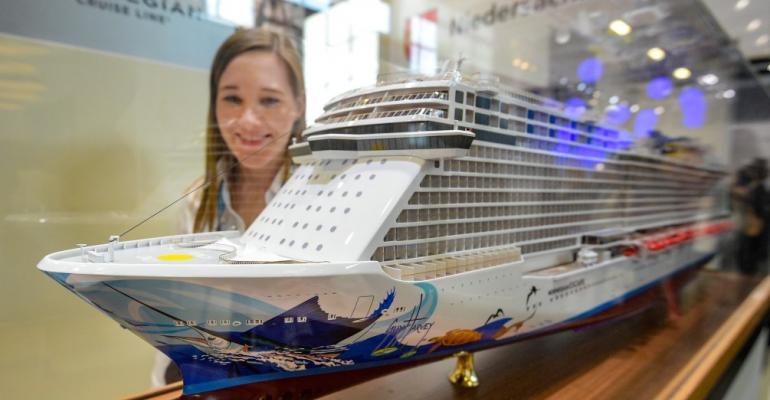Some 2.02m ocean cruises were sold to the German source market last year, up 11.3% on 2015. The accumulated turnover grew by 17.8% to €3.38bn. Three out of four Germans took a cruise in European waters last year.
Karl J. Pojer, ceo of Hapag-Lloyd Cruises and chairman of the leadership council of CLIA Germany, said an increase in capacity contributed to the strong growth achieved last year. Highlighting the attractiveness of cruising for all generations and in particular families, Pojer stressed that almost 10% of Germany’s ocean cruise passengers are below the age of 15.
According to the German market study, contracted jointly by CLIA Germany and DRV, previous trends towards shorter and less expensive cruises have turned around. The average length of an ocean cruise sold on the German market in 2016 amounted to 8.94 nights, up from 8.69 nights in the previous year.
On average, German passengers spent €1,675 for their cruise, a 6% increase. The average daily rate increased by 2.8%, from €181.86 to €187.
As far as destination appeal, the northern part of Europe is gaining more importance for German cruisers with the Baltic, northwest Europe and the British Isles accounting for 36% of the market, up from 33.6% in 2015.
Demand for the Mediterranean, in contrast, dropped slightly from 31.2% to 28.3% owing to political instability in the eastern Med and, specifically, Turkey, which has been a highly popular destination for German tourists both onshore and at sea for many years.
The Atlantic Corridor, with the Canary Islands as its hotspot, slightly increased its market share from 11.4% in 2015 to 11.9% last year. North America and the Caribbean accounted for an 11.6% share against 11.3% in the previous year.
In total, German passengers spent 18.04m nights on board ocean cruises last year, up 17.5% from 2015. This corresponds to the strongest year-on-year growth recorded since 2010.
Lines souring in Germany remain very optimistic for the year ahead, not least as new tonnage – including, among others, Mein Schiff 6 and AIDAperla – is going to feed a continuously hungry market.
With regard to long perspectives, CLIA Germany’s national director, Helge Grammerstorf, yesterday described sustainable growth of the industry as one of the core challenges. Grammerstorf called on ports, administrations and politicians to work closely together on that issue, stressing the pioneer function taken by cruise lines in order to strengthen sustainability and reduce their environmental footprint.
Copyright © 2024. All rights reserved. Seatrade, a trading name of Informa Markets (UK) Limited. Add Seatrade Cruise News to your Google News feed.


